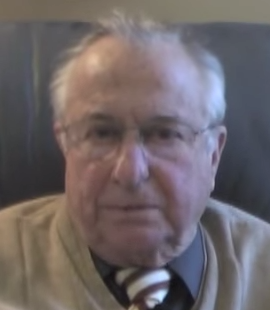Weinmann: Opioid Prescribing and Panic
Tuesday, August 15, 2017 | 2
The mechanism of opioid action is through a receptor mechanism that we all have, namely, mu, delta and kappa receptors.

Dr. Robert Weinmann
Human opioid receptors are endogenous and can be activated by endogenous peptides such as the enkephalins, dynorphins and endorphins. These substances are released by neurones and are thereby made available for pain modification. Endogenous opioid peptides comprise a class called endorphins.
This class of neurochemical stimulation is available to injured persons and can be mobilized into action without prescribing the likes of vicodin, oxycodone, OxyContin or similar controlled substances (or illegal non-controlled substances).
This level of neurochemical stimulation can be triggered to release endogenous substances in the human body that relieve pain. For instance, physical therapy, aquatic therapy or massage can have this favorable effect. When these methods don't work, analgesic medication, including opioids, may then be prescribed.
The trouble is that in the case of injured workers covered by workers' compensation, these alternative methods to opioid prescribing are often rejected by utilization review. Then that rejection by UR gets rubber-stamped by anonymous independent medical review doctors whose prejudices cannot be addressed, since their names are kept secret.
When the primary treating physician's attempt to prescribe an alternative to analgesic relief is denied authorization, the next step is pharmacological, often opioids. That's when the bureaucratic howling begins. What should happen instead is that the UR and IMR doctors who denied treatment by physical therapy or massage should be relieved from duty.
"Turn the Tide," a publication of the U.S. surgeon general, discloses resources for the proper prescribing of opioids for pain, chronic pain in particular. For instance, once opioids are prescribed, they should be continued only if "meaningful improvements in pain and function without significant risks or harm" can be documented. Interestingly, the brochure distributed by the surgeon general, states in red capital letters, "Start low and go slow."
In fact, in The Weinmann Report entry "Opioid Denials and Obstruction of Alternative Treatments" (June 26, 2017), we discussed how The Washington Post in 2001 made a front-page headline about a doctor in California who was being sued for not prescribing enough pain medication.
We also cited a peer-reviewed reference from Headache that stated that opioids were useful in pain management but that their use had to be slow, slow, slow, this advice was 17 years ahead of "Turn the Tide" and 10 years before Joe Paduda's original article.
In Paduda's panic-ridden piece entitled "Narcotic use is rampant in workers compensation," we are told that "the problem is showing up in a doubling of emergency room admissions due to prescription drug abuse, driven primarily by oxycodone, methadone and hydrocodone." This particular article makes no reference to the UR denials for physical therapy, massage and alternative treatments that force patients into the pharmaceutical stream.
On the contrary, Dr. John Torres recommended massage therapy on MSNBC with moderator Craig Melvin on Aug. 1 this year. It isn't clear whether Dr. Torres knew he was recommending a treatment often rejected by workers' comp UR. Since we had the privilege of evaluating just this kind of patient recently, we'll see what happens if and when the PTP asks for overturn of the denial of massage therapy.
Readers should not be surprised. Since the emphasis now placed on evidence-based-medicine, the reliance on the winds of fashion and bureaucracy has only increased.
Dr. Robert Weinmann writes the Politics of Healthcare blog, from which this entry was taken with permission.




Comments